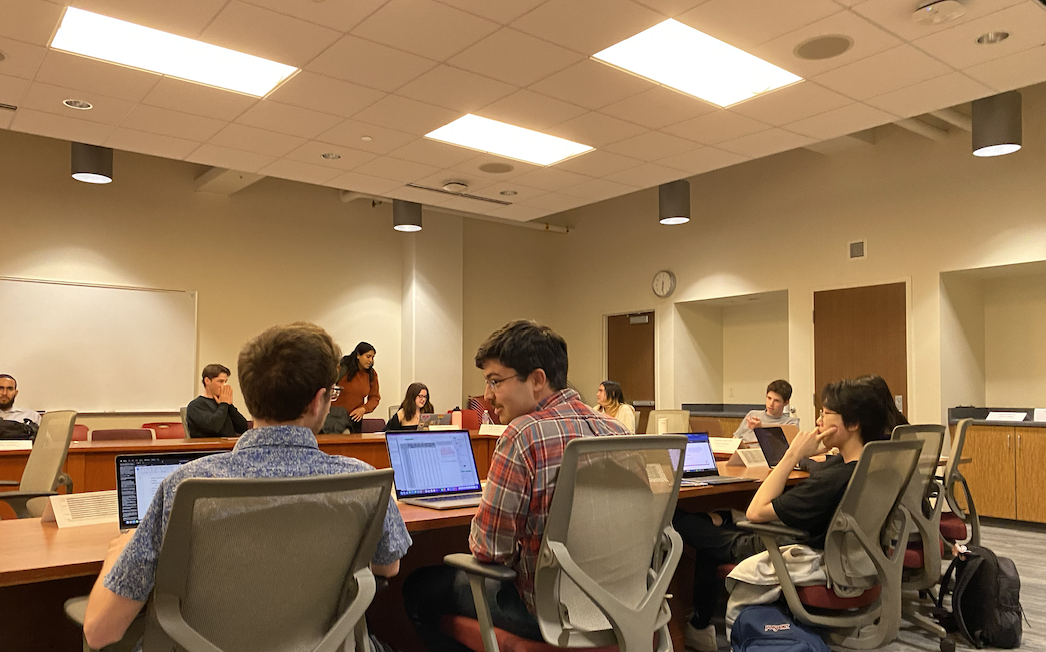Classes will be over soon, and then it will be summer.
The nice weather, freedom from homework, and longer days are all greatly conducive to socializing. Why stare at the wall in your apartment when you can go to the Terrace and drink with others? But social interaction among human beings is a daunting undertaking. Once school ends, you may be tempted to slam the door on all aspects of scholarly thought, but don’t be so rash. Taking an academic approach to summer socializing could revolutionize your personal life. Or maybe not, but it’s really interesting anyway.
When we first meet other people, it is common practice in many cultures to shake hands. This is an ancient symbol of trust and honesty. Centuries ago, it was common for people to carry daggers. When they met someone new, they would extend their right hand to show that they were not armed. The other person would in turn extend their hand to show that they were not armed. The two parties then gripped hands until certain the other meant them no harm.
We are generally not concerned about being stabbed in the side with a dagger when meeting people nowadays, but the handshake still carries some of its original implications. Numerous psychological studies indicate that brief, non-threatening physical contact will improve strangers’ dispositions toward each other and lead to greater honesty and helpfulness in the transactions which follow.
Making eye contact is an extremely powerful way to make an emotional link with another person. People who like each other make more direct eye contact than people who don’t. The action raises such strong emotions in humans that most people cannot hold direct eye contact for longer than three seconds. Studies show that when eye contact is maintained, stress levels rise and heart and breathing rates increase.
There are six muscles that cooperate to move our eyeballs around. The nerves in these muscles are connected to the unconscious and thinking parts of the brain.
Some of our eye contact behavior is rooted in evolution. In nature, direct, fixed eye contact is a sign of aggressiveness and often precedes an attack.
Also, due to our evolutionary origins as primates, human beings tend to find their eyes drawn to objects which primates would find interesting, such as trees, hands and faces.
Summer is a great time for dating and starting new relationships. The way human beings court each other is also an ancient practice, harking all the way back to our days as monkeys.
When a human is attracted to someone else, they perform a little test using touch to see if that person feels the same. Pretending that it is accidental and unpremeditated, they will lightly touch a neutral body part, such as a forearm or shoulder, of the person that they wish to test. There are a series of sensitive pads on the fingertips that serve as tactile antennae to gauge the response of the individual that they are touching. These tactile pads can detect negative responses such as a slight startle, the tensing of muscles, moving away or a complete lack of reaction. Positive reactions include lifting the shoulders, tilting the head and returning the touch. This test is a normal part of the modern courting ritual, but it is also the true evolutionary method to determine where a potential partner stands.
Kissing is a worldwide sign of love and affection. The most sensitive area of the face is the lips and nose.
When the nerves in this area are stimulated, the sensation travels through the trigeminal nerve, up the spinal cord, into the brain stem, and then directly into the amphibian midbrain. This part of the brain is responsible for processing audiovisual cues and plays a key role in the expression of dominance and submission.
See, a little scholarly background proves that dating and relating are not nearly as complicated as they appear.
After all, we’re just highly evolved animals (some more evolved than others). I’ll see you monkeys on the Terrace.













